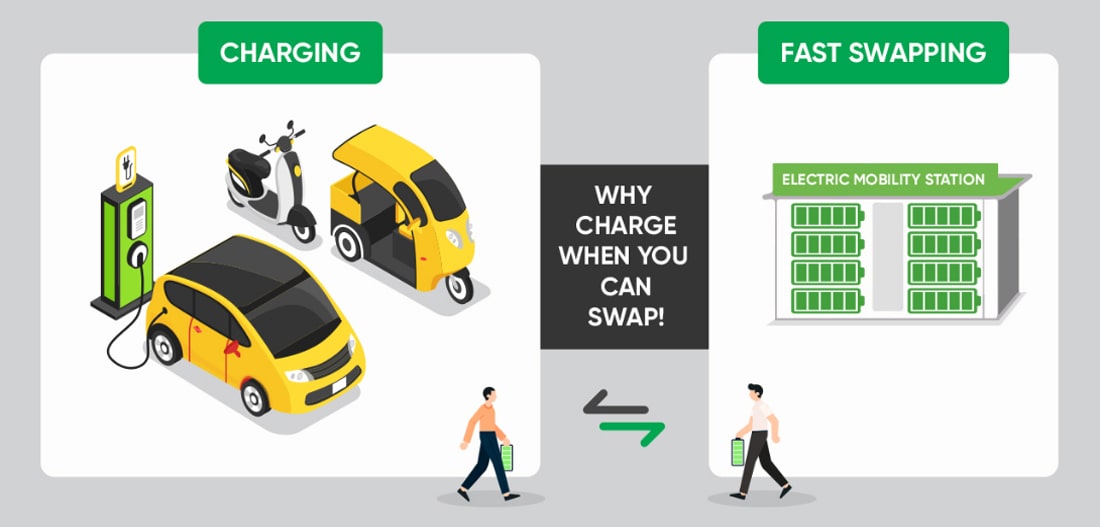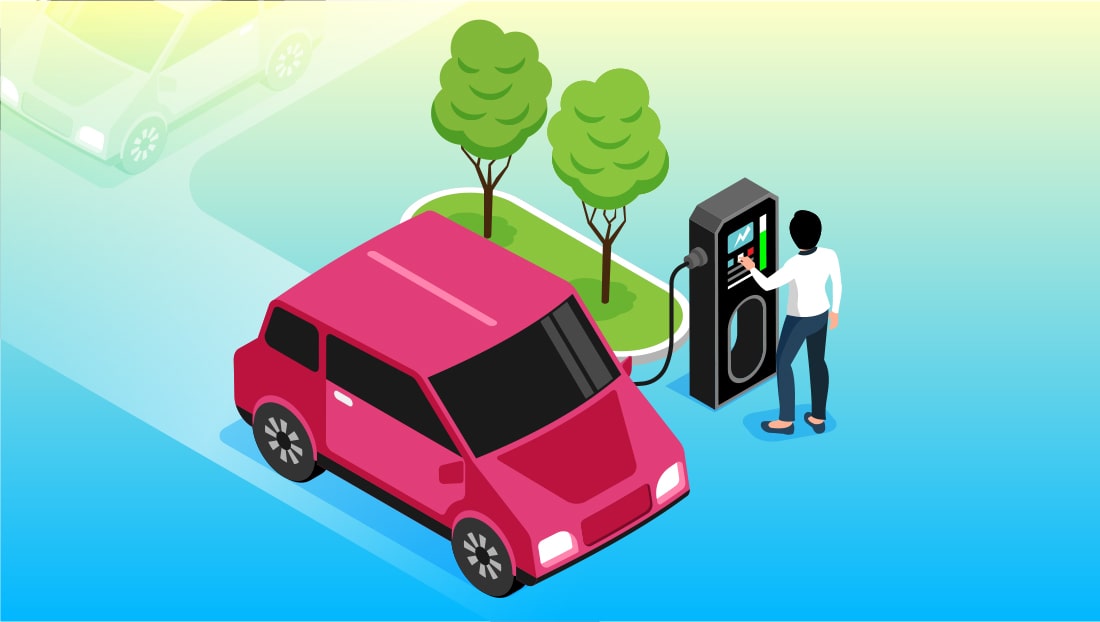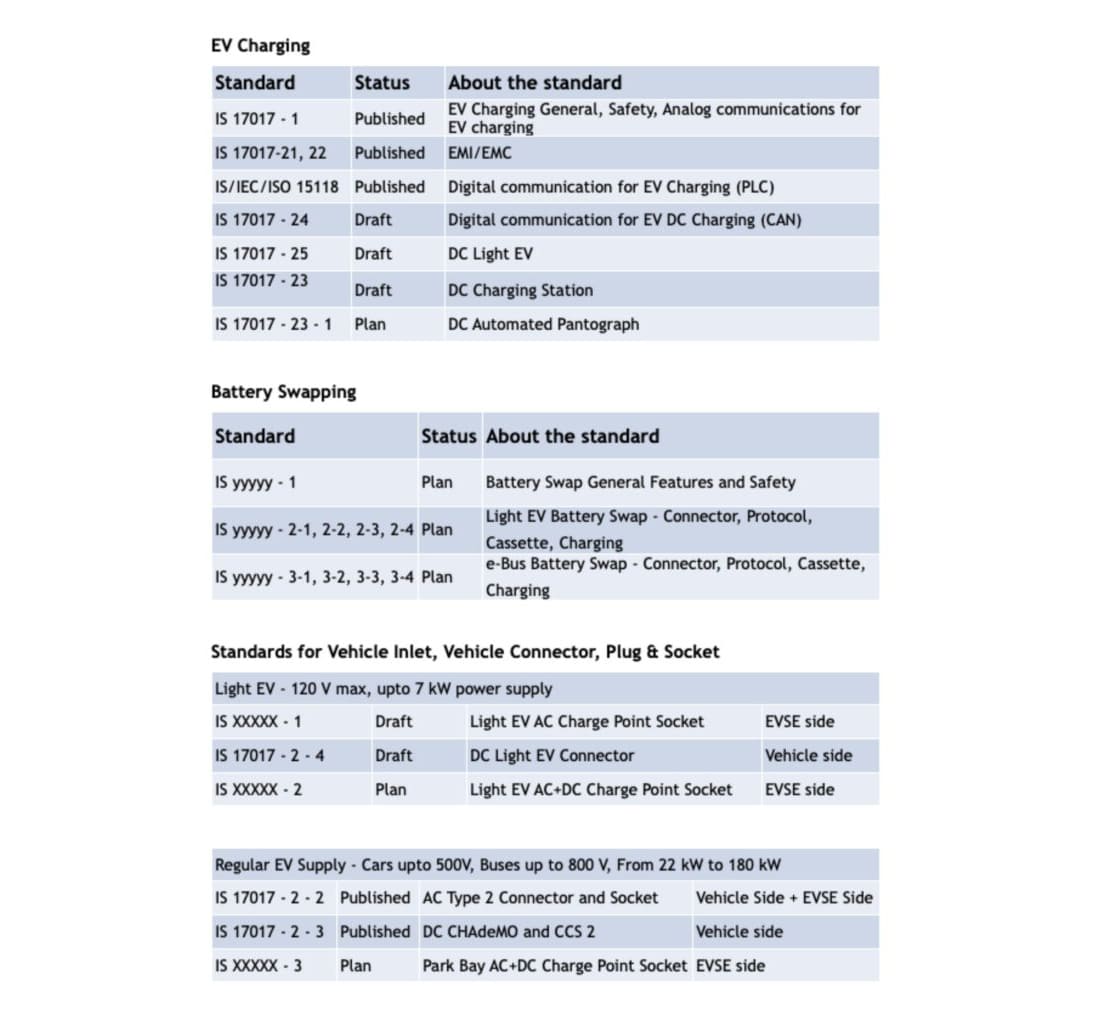| Pros | Cons |
|---|---|
| Helps combat range anxiety | Resistance in sharing information |
| Reduces the cost of EV by 30-50% | Capital intensive, fetches slow returns |
| Lean subscription-based service model | Manufacturing more batteries will harm the environment |
| Will significantly boost EV adoption | Automation, in the long run, is expensive than setting up an EV charging station |
Quick Summary:
This blog post contains a comparative analysis between EV battery swapping vs charging station based on relevant metrics such as standards, challenges and cost comparison.
Table of Contents
Introduction
The Indian Electric Vehicle market is significantly growing YoY. If we look at the EV sales as of 2021, India witnessed a sale of 3.1 lakh EV units, which was more than double the EV units sold in 2020 (around 1.19 lakh units).
By 2030, the Government of India has set out a plan to replace private and commercial vehicles by 30% and 70%, respectively. This also includes 80% of two-wheelers and 40% of the public transport with electric vehicles.
However, many challenges have persisted to date in the EV adoption, from the time of development. These involve range anxiety, inadequate charging facilities, and long wait times for full charging.
The ongoing continuous improvements in the development processes have been supported through various policies in the EV ecosystem.
Let us deep delve into comparing EV battery swapping vs charging station.

EV Battery Swapping vs Charging Station
In Battery swapping, an EV owner can replace their batteries with a depleted one, saving the time taken in full charging. At the same time, an EV charging station is similar to a gas station with normal charging and fast DC charging facilities. Currently, there are 1640 operational EV charging stations across India.
If we look at the road map towards faster EV adoption, the central government has laid a plethora of policies and guidelines, such as the FAME 1 & 2 scheme. The Union Ministry of India has permitted the installation of 6000 EV stations on nine expressways.
According to the Ministry of Power, setting up the Public Charging Stations in India can be done by an individual or a private group, adhering to technical standards and compliances.
Battery swapping policy adopting Battery-as-a-Service (BaaS), on the other hand, has propelled the enthusiasm amongst the private sector to design inventive, reliable, and sustainable models for battery packs to enhance the efficiency of the EV ecosystem.
Let us go through the key metrics crucial for deciding what is more suitable for the Indian EV market and compare EV battery swapping vs charging station.
Standards

★ EV Charging Standards:
You might be aware that the EV charging standards in India vary across Level 1, Level 2, and Level 3 charging stations across different regions. As per the revised guidelines & standards for EV charging infrastructure, at least one charging station should be available within every 25 km. You can read our white-paper about EV charging infrastructure in India to know more about government guidelines & standards.
The OEMs in India are complying majorly with the combined charging system. The Bharat EV specification clearly states separate AC and DC charging standards under AC-001 and DC-001.
Future-proof your charging ecosystem with India’s most reliable and safe EV charge controller
Bacancy’s CCS2CON comes with built-in features, ready to support your charging infrastructure. Secure today!
★ Battery Swapping Standards:
The newly introduced battery swapping policy standards are yet to be announced. Clearly, the vision of adopting battery-as-a-service is to facilitate interoperability and reduce operational efforts. The battery-as-a-service model is like a breath of fresh air, especially for the EV owners since the cost of buying a car reduces to about 30-50%.

Challenges
If we compare EV battery swapping vs charging station based on the challenges, effective decisions are being taken to normalize these running methods.
★ Challenges in EV infrastructure:
Setting up a charging station requires heavy capital investment in space and technology. Moreover, fuel stations can be converted to electric ones, but that requires sophisticated planning and execution. Giants like Tata and Shell are working towards building more charging stations in PAN India.
★ Challenges in Battery Swapping:
In contrast, setting up a battery swapping is more feasible for the EV ecosystem, aiding more manufacturers/dealers to deliver EV battery packs compliant with the set standards.
However, some critical aspects include standardization of the battery design and efficient testing and compliance for compatibility adherence. Automating a battery swapping facility, in the long run, can cost around ten times more than setting up an EV charging infrastructure.
Here are the pros and cons of battery swapping.
Cost Comparison
The cost of installing a fast DC charging station is significantly higher than the A/C infrastructure. The total investment constitutes vital factors like capital, charging equipment, electricity, labor & maintenance cost.
★ Cost of EV Charging Station:
The total investment cost ranges from Rs.1 lakh to 40 lakhs, as per the charger type and the amount of money involved. Specifically, a Bharat DC01 Type 2 charging station costs around Rs 16.5 lakh. The CCS-type charger costs higher, with the top end ranging upto Rs 40 lakh.
★ Cost of Battery Swapping Facility:
The exact cost of setting up a battery swapping facility in India can be only be stated after implementing the same. Experts have assessed it to be around 1 lakh for a station consisting of around 20 batteries. This cost can go upto 3.7 crores, depending on the scalability of automated processes.
The recent example is the two-wheeler start-up Bounce, which has already employed the battery-as-a-service model (BaaS). It has over 200 swap stations running in Bengaluru. The company is now expanding close to 2,000 additional stations across six cities in India for the upcoming year.
We have so far discussed the key parameters for comparing EV battery swapping vs charging station. Let us quickly discuss how to move ahead and the final opinion.
Way Forward: A Sustainable EV ecosystem
With just 2% of the EVs in the auto market, there is a long way to go in completely replacing them with traditional vehicles. Nevertheless, the future of EV looks promising. The vital spheres like the norms and policies, consumer mindset, and technology align with the vision of driving sustainable mobility solutions.
Battery swapping promises range extension and efficiency for an electric vehicle within minutes. However, there would be associated challenges for the OEMs and BMS manufacturers regarding standardization, data sharing, conflict of interest, etc.
On the other hand, EV fast-charging stations have started delivering up to 80% of battery recharges within 10 to 15 minutes. Though, the cost of installation is still under the scope of assessment. In the case of fast charging, only charging standards need to be aligned and not the entire Battery Management System or battery architecture.
EV Battery swapping vs charging station is a battle for continuous improvement in our EV ecosystem. I hope by now you would have been able to relate that battery swapping and EV charging stations are two ends of the same coin.
Most likely, the government will push both the solutions in the market for the consumers to choose what suits them the best.
Frequently Asked Questions (FAQs)
It is safe to charge your EV with equipment that is certified.
You must follow the SOPs defined under the EV charging guidelines to mitigate the risk of having any fire hazard or electric shock injury,
A controller is a brain behind the vehicle’s intelligence, coordinating the parameters crucial for its performance. Check out Bacancy’s EV ready products such as the battery management system, motor controller, and ev charge controller to future-proof your EV ecosystem today!
Manual and Autonomous are two types of swapping facility in India. Released in the EV charging infrastructure handbook by the NITI Aayog, Government of India.
Gogro, based in Taiwan is the pioneer in EV battery swapping technology which is used across the world for E-bikes.
Your Success Is Guaranteed !
We accelerate the release of digital product and guaranteed their success
We Use Slack, Jira & GitHub for Accurate Deployment and Effective Communication.


